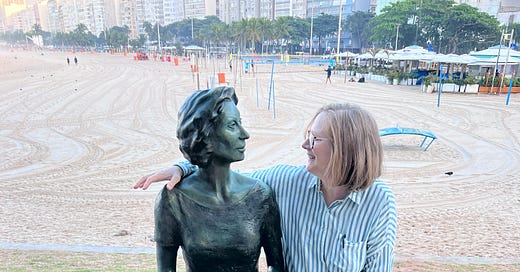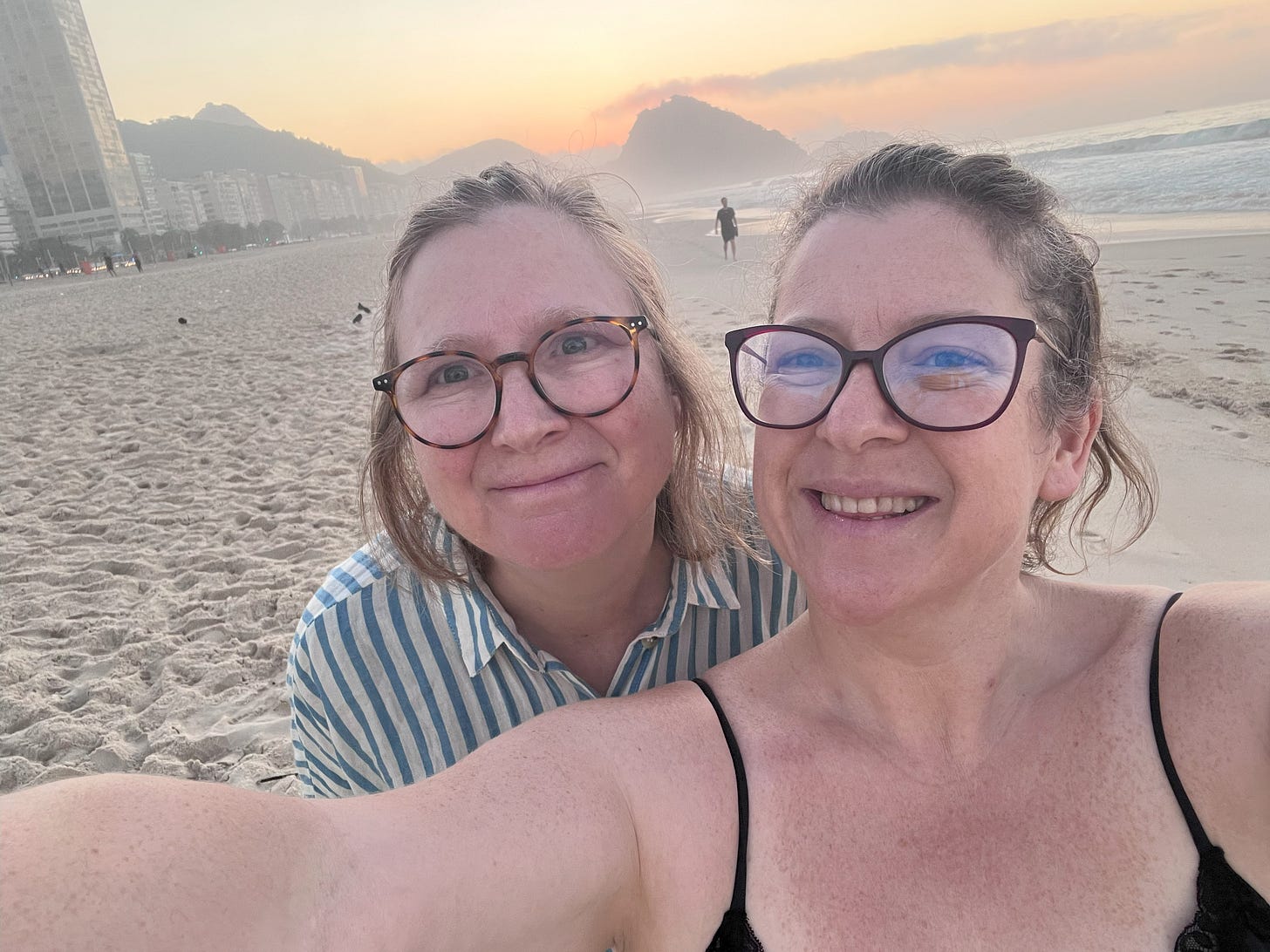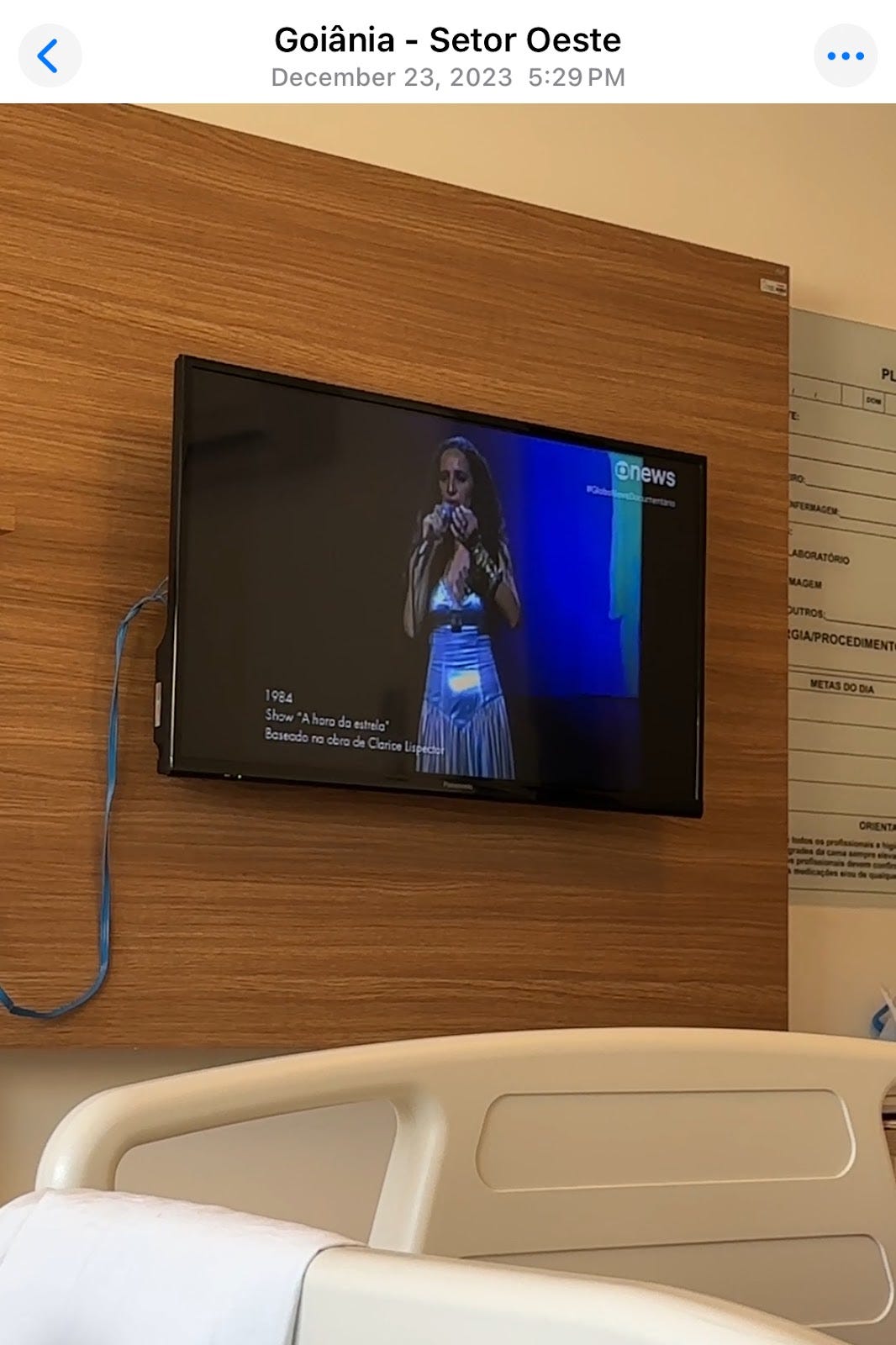Dear Readers,
Amy here, beginning this adoration of Clarice Lispector.1
This Brazilian author was born in Ukraine, grew up in Brazil, and lived elsewhere with her diplomat husband before returning. I met her work when Ellie sent me her novel, Hour of the Star. Almost immediately afterward, I learned of a collection of her ‘crônicas.’ A novelist writing brief pieces, lyrical reflections on life, for magazines and newspapers? Yes, please!
Too Much of Life gathers her columns, ranging from the 1940s through the seventies. They are inviting reflections, and when I was in Rio, I was awed by the fact that I was in the city she chronicled. I didn’t know the place from her — everything was brand new to me: the Rio sidewalks kissing my eyes with their wavy pattern, the bread and cheese, the fruit, the fruit, the fruit!
The place and language hit me hard. I was in another world, and I haven’t quite returned to mine yet. I’m hovering, wrestling with the size of the world, and the many, many lives people are trying to live. Traveling takes a long time to absorb, the life I left and the life I had as a visitor. Plus, I cannot believe the America I’ve returned to — I wish what was happening was a horrible movie.
The last day I was in Rio, I got up with Jessy and walked the beach toward Leme, where she lived. The sunrise over the rocks seemed animated, the sunshine and day a creature embracing us. Walking on a rock ledge, we saw graffiti and people fishing. We found a pen, and then, amazingly, a statue of Clarice!
Clarice’s books and columns explore the objects and emotions of the everyday. I’ve been thinking about the dailiness of living, and of writing, studying the diaries at the Hart Cluett Museum, and noticing what I do and don’t write about as tyranny rises and now, as my country begins bombing Iran. How can chickadees keep teasing my cat? How can I keep feeding us in this blasting heat? How can my youngest turn 22 in the midst of war and climate change?
These big questions are best answered, I think, in little pictures.
Inspired by Clarice, and another woman writer I adore, Shirley Jackson, I’m going to begin posting small daily observations on Instagram and reposting them weekly over here.
In the meantime, I hope you will look for Clarice Lispector’s writing at your library and bookshops — and enjoy Ellie’s reflections on the place of this writer in the life of Brazil.
— Yours, Amy
From Ellie:
I love Clarice Lispector. When I was a kid, I was introduced to her writing in school alongside other authors including Machado de Assis, Carlos Drummond de Andrade e Vinicius de Moraes who wrote ‘crônicas,’ a Brazilian literary genre that reflects on the everyday. Many ‘cronistas’ at that time were also journalists. I loved the prose in the vignettes they captured. They were a blend of literary journalism with a touch of personal reflection and philosophy; sometimes with humor. They offered a window into situations that were both possible and surreal. Their work lives in our subconscious and sometimes in our living rooms.
“We read Clarice not for literature, we read Clarice for life”-- José Guimarães Rosa, Brazilian novelist.
The week my dad died, Clarice Lispector “A Hora da Estrela” was playing in the hospital room, read by Maria Bethânia.
“A Hora da Estrela” was Clarice’s last book published in life.
I have always been intrigued with the narrative of the quotidian. It is something I see in my own work. I trained first as a photojournalist, and in that career I tried to capture fleeting moments with my camera. Now I pursue the same goal through food and digital storytelling, using both as mediums as starting points for conversations and community building.
I don’t remember what I wrote in school, but I wrote a lot of letters to friends I saw daily, about my days, my dreams and my thoughts. I kept diaries too, most of which I eventually tossed. Clarice said she tossed some of her work too. Mystery she reserved for herself.
Why spend time on something only to watch it vanish? A contradiction, maybe?
I was ready to let go of my journals. They were written to live in the present, like a meal I tasted and felt satisfied.
I am creating a form of art that mostly disappears in the end?
In my kitchen, the dishes and fermentation vessels are snapshots of daily life breaking down, fulfilling a journey. The documentation I create are just attempts to hold on to digits in screens fading in social media feeds and timelines.
Yet they are worth in the moment and in their capacity to transform not for the future, but for the now. I believe in documentation of one’s work of course, the impact of sharing, just not let that be the only reason for it to exist in the continuum. Let our art satiate us.
In what is said to be Clarice last interview before her death she said:
“Eu só escrevo porque não consigo deixar de escrever. E mais forte do que eu”
“I only write because I can't stop writing. And it's stronger than me.”
Yours, Ellie
Read about her:
2015 article about Clarice Lispector from The Atlantic. The story includes a video of a 1977 interview with her.








Big time love! I’m reading Complete Stories right now.